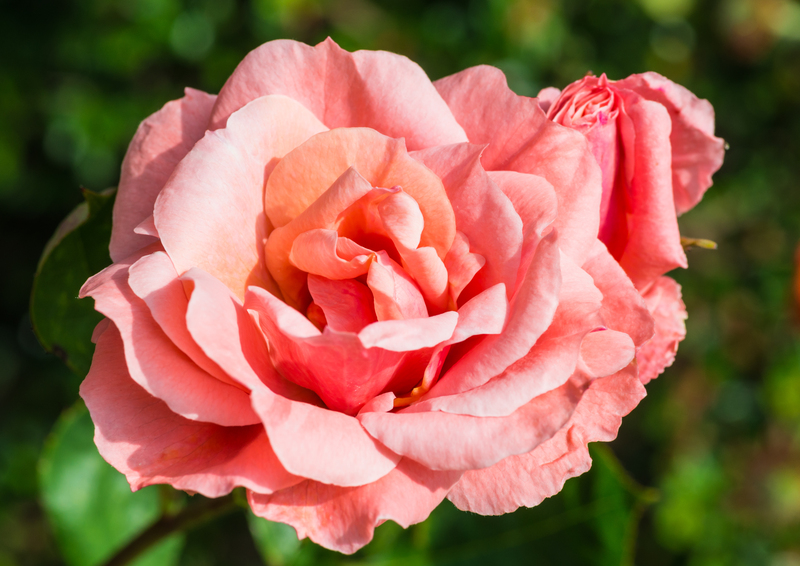9 Fundamental Gardening Tips to Nurture Your First Plants
Posted on 18/06/2025
9 Fundamental Gardening Tips to Nurture Your First Plants
Ready to cultivate your green thumb and grow lush, healthy plants? Starting your own garden is a rewarding journey filled with learning, patience, and joy. Whether you're sprouting kitchen herbs or plotting a vibrant flower bed, nurturing your first plants can feel daunting without the right guidance. Discover the essential gardening tips for beginners that ensure success and kickstart your gardening adventure with confidence.
Why Gardening is Worth Your Time
Gardening offers numerous benefits beyond improving your outdoor aesthetics. Studies show that spending time in a garden can reduce stress, encourage mindfulness, and promote physical activity. Plus, nothing rivals the satisfaction of harvesting homegrown produce or watching flowers flourish due to your care.

1. Choose the Right Plants for Your Space
Selecting the right species is the cornerstone of gardening success. Not all plants thrive in the same environment, so match your plants to your specific growing conditions:
- Sunlight availability: Observe your garden for a few days. Do you have full sun, partial shade, or lots of cover?
- Climate zone: Learn your USDA hardiness zone or local equivalent to identify best-suited plants.
- Soil type: Sandy, clay, or loamy soils support different plant varieties.
- Space constraints: Choose compact or container-friendly plants for balconies and small gardens.
Pro Tip: Begin with hardy, low-maintenance plants such as marigolds, sunflowers, or basil until you gain more experience.
Picking a Gardening Style
- Herb garden - ideal for culinary enthusiasts.
- Flower beds - boost curb appeal and attract pollinators.
- Vegetable patch - enjoy fresh, home-grown food.
2. Understand and Prepare Your Soil
Soil quality can make or break your garden. Healthy, fertile soil provides nutrients and better moisture retention for robust plant growth. Test your soil using a home kit or by contacting local extension services. This helps you measure pH, drainage, and fertility.
Improving Soil Structure
- Add organic matter: Compost, well-rotted manure, or leaf mold enriches soil.
- Correct pH: Apply garden lime for acidic soils or sulfur for alkaline conditions.
- Aerate: Loosen the ground with a fork or tiller to promote root penetration.
Tip: Healthy roots grow best in loose, well-draining soil. Mulch can be added after planting to further maintain soil moisture and cut down on weeds.
3. Master the Art of Watering
Beginner gardeners often over or under-water. Each plant has unique needs, but consistency is key to avoid stress. Here's how to nurture your plants efficiently:
Smart Watering Guidelines
- Water early morning: Reduces evaporation, helps leaves dry naturally and prevents diseases.
- Deep, infrequent watering: Encourages roots to grow deeper and becomes drought-resistant.
- Check soil moisture: Stick your finger 1-2 inches into the soil. Water if it feels dry.
- Avoid foliage wets: Target the base of the plant to prevent fungal diseases.
Adjust your schedule during rainy seasons or heatwaves to maintain healthy moisture levels.
4. Provide Adequate Sunlight
Sunlight powers photosynthesis, helping plants produce the energy they need to grow. Most vegetables and flowers thrive with at least 6-8 hours of sun daily. Pay attention to your garden's exposure throughout the day.
Tips for Sunlight Management
- Rotate plant positions in pots or raised beds to maximize exposure.
- Choose shade-tolerant species like ferns or hostas for dimmer corners.
- Use reflective surfaces or place lighter colored stones to direct more sunlight to needy spots.
5. Feed Your Plants with the Right Nutrients
Just like us, plants need a balanced diet. Fertilizing enriches soil and supplements essential minerals that might be lacking. Key macronutrients include Nitrogen (N), Phosphorus (P), and Potassium (K).
How to Use Fertilizers Safely
- Organic options: Compost, manure, worm castings.
- Chemical fertilizers: Follow package instructions to avoid "burning" roots.
- Timing: Feed during active growth periods (spring and summer).
- Frequency: Every 4-6 weeks for most annuals; adjust for perennials.
Remember: Over-fertilizing can harm soil and pollute groundwater--use only as directed.
6. Stay Vigilant Against Pests and Diseases
Unwanted insects and fungi can damage your burgeoning garden. Implement a monitoring routine and use natural solutions to keep your plants safe:
Top Natural Pest Control Tips
- Encourage helpful insects like ladybugs or lacewings.
- Inspect leaves for discoloration, holes, or sticky residue.
- Rotate crops yearly to disrupt pest cycles.
- Use neem oil, insecticidal soap, or homemade garlic sprays for mild infestations.
- Remove infected parts promptly to prevent spread.
NOTE: Avoid broad-spectrum pesticides that harm pollinators and reduce overall biodiversity.
7. Prune and Support Your Plants Regularly
Regular pruning and staking help your garden reach its full potential and maintain good health. This is especially true for fruiting plants and tall flowers, which can become unruly or break under their own weight.
- Remove dead or diseased stems to stimulate healthy growth and airflow.
- Pinch off faded blooms (deadheading) for longer flowering seasons.
- Use stakes or trellises to support heavy or vining plants like tomatoes and beans.
Pruning techniques vary by species, so research your plants' specific needs or use clean, sharp tools to minimize injury.
8. Mulching - The Secret Protector
Mulch acts as a protective barrier for the soil, helping with weed suppression, moisture retention, and temperature regulation. Common materials include wood chips, straw, and shredded leaves.
- Apply 2-4 inches: Spread generously around plants, but keep away from direct stem contact.
- Organic mulch: Breaks down over time, enriching soil health.
- Refresh annually: Add new mulch each growing season for optimal results.
Bonus: Mulching reduces the frequency of watering and provides a neat, finished look to your garden beds.

9. Embrace Patience and Document Your Garden Journey
Gardening is not just a hobby; it's a process. Slow growth, unexpected failures, and pleasant surprises are all part of the experience. Celebrate each improvement and learn from mistakes as you go.
Why You Should Keep a Garden Journal
- Track planting dates and seasonal changes.
- Record what succeeds or struggles in your unique conditions.
- Document pest and disease issues for future reference.
- Photograph progress: Enjoy visual evidence of your gardening skills improving!
Patience and observation are the gardener's most valuable tools. Each season adds to your knowledge - and confidence.
Conclusion: Grow Your Garden, Nourish Your Soul
By mastering these basic gardening tips for beginners, you lay a strong foundation for lifelong growing success. Remember to choose the right plants, prepare your soil, water wisely, and observe your plants daily. Embracing these fundamental gardening habits will help you nurture not just your first plants, but also a lasting passion for gardening.
Ready to dig in? Start small, stay consistent, and watch your first plants bloom and thrive before your eyes. With these nine essential tips, any beginner can become a confident, capable gardener and enjoy the many rewards of cultivating a green oasis.
Happy gardening!
---Related topics:

